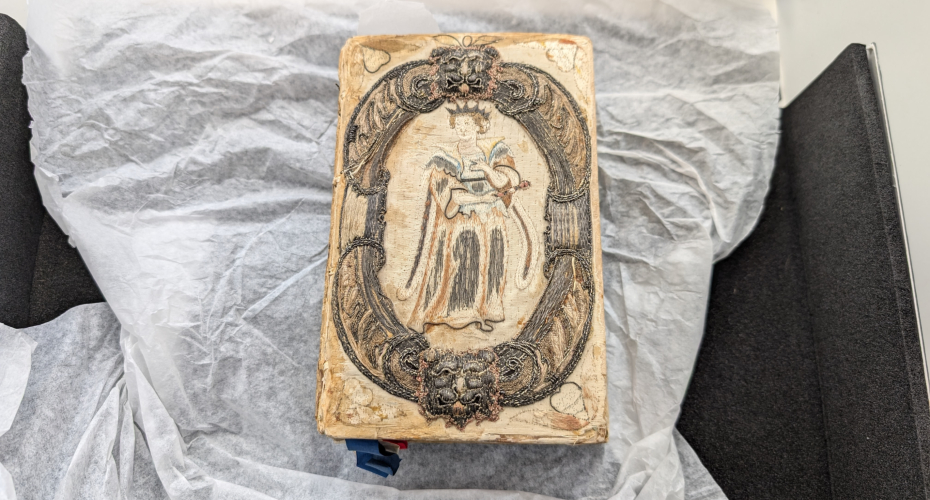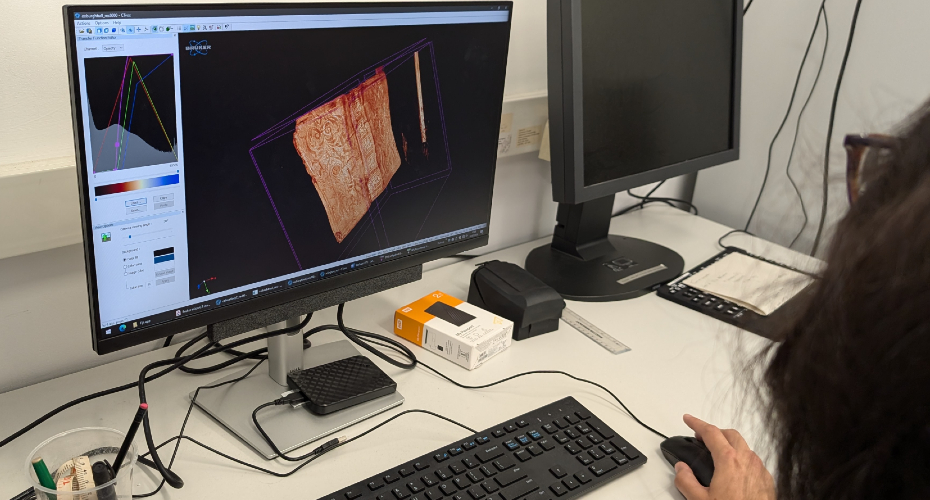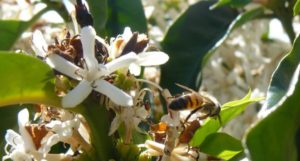First-of-its-kind archaeological laboratory helps the National Trust to restore rare book

A rare and ornate book dating back to the 1600s has been restored and returned to public exhibition with the help of a cutting-edge archaeological facility at the University of Exeter.
Embroidered with silver and gold thread and one of very few of its kind to survive, the 1636-edition of the Prayer Book, belonging to the Cornish stately home of Lanhydrock, has needed repair for many years.
The conservation team at the National Trust – who look after the property near Bodmin – had safely stored the copy to prevent further deterioration, but needed to ascertain the extent of the work required beneath its threadbare cover.
Now, thanks to the Science Heritage and Archaeology Digital (SHArD) 3D Lab in the University’s Department of Archaeology and History, they have been able to peer into the heart of the book and see that it would be robust enough for remedial work.
This story, and other restoration work at Lanhydrock, is featured in this week’s episode of the BBC series Hidden Treasures of the National Trust.

“The use of micro-CT technology is growing in the domain of museums and heritage science,” says Dr Carly Ameen, Lecturer in Bioarchaeology and the Lab’s Director. “It has the potential to make a significant contribution to our understanding of some of our most delicate pieces of cultural heritage. It was precisely for this type of collaboration that we founded the SHArD 3D Lab, opening potential partnerships with curatorial and conservation communities.”
The SHArD 3D Lab was funded by the Arts and Humanities Research Council’s Creative Research Capability scheme, and is equipped with state-of-the-art equipment to cover a wide range of applications in archaeological and heritage science. This includes advanced digital microscopy, Xray imaging and micro-CT imaging, and 3D modelling capabilities utilising structured light scanners for both small objects and entire landscapes. The Lab is also equipped with a portable XRF for elemental analysis, and two drones for aerial survey and landscape modelling.
And it was for these facilities that the National Trust brought several books for scanning, including the Prayer Book featured on the programme as part of a wider conservation of the plasterwork ceiling in Lanhydrock’s Long Gallery. The Gallery, which dates back to the Jacobean period, contains one of the most significant and early (pre-1640) book collections in the National Trust.

Narrated by actor Toby Jones, the programme explains how the book likely came into the possession of John and Lucy Robartes, the then owners of Lanhydrock, around 1634. Its cover features Queen Esther and King David and inside are four texts bound together in one volume – The Book of Common Prayer (London,1635), The Genealogies (1635), The Holy Bible (1634), and The Whole Book of Psalmes (London, 1636).
“This intricately embroidered book binding is a rare survival of a uniquely English and short-lived phenomenon of the early 17th century,” said Alison Cooper, Regional Curator at National Trust. “These bindings are generally found on small books used for personal prayer, intended to be carried as an outward expression of piety and devotion. The inclusion of Old Testament figures of David and Esther is appropriate for Lanhydrock where Puritan owners John and Lucy Robartes also commissioned Old Testament scenes – including depictions of David – for the decorative plasterwork of their new house.”
Securely bound and placed inside the CT-scanner, the book was x-rayed for more than an hour by technicians in the Lab. Specialist software then enabled the team to examine it layer-by-layer on a computer, literally peering beneath its surface to understand its structural integrity.

As a result, the book then went on to a textiles specialist, who repaired much of the thread work. By the end of the programme, viewers can see it is back on display in the Long Gallery, whose ceiling has also been restored.
“The ability to unlock the physical structure of books and explore the hidden secrets of their manufacture is an extraordinary opportunity to enhance our understanding of early book making technology,” adds Dr Ameen. “It was a pleasure to work with the team at the Trust and help in the restoration process of this beautiful book.”
Episode 6 – Raising the Roof – of Hidden Treasures of the National Trust will be screened on BBC Two, on Friday 20 June at 9pm. All episodes are also available on BBC iPlayer.



